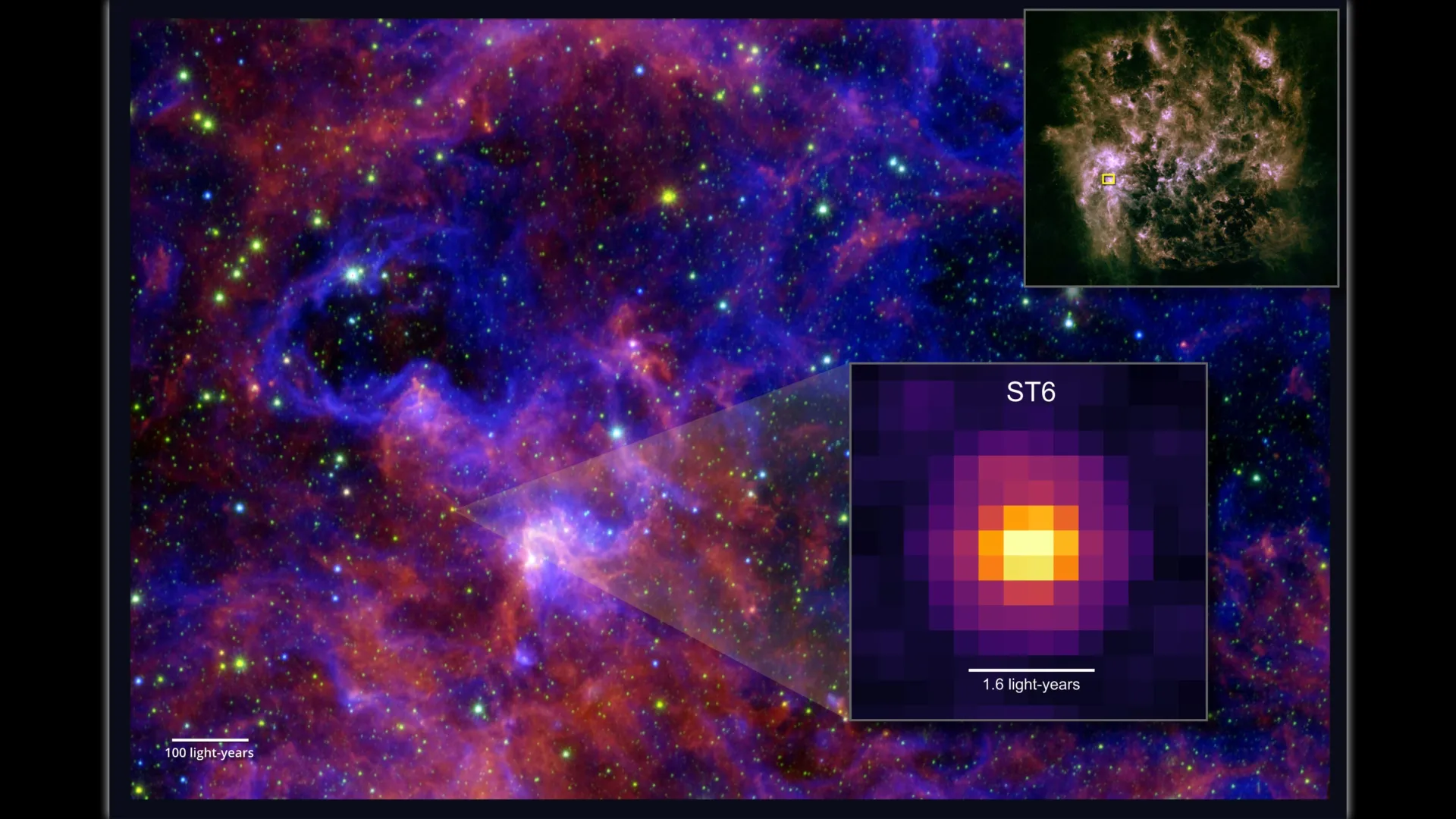UPDATE: In a groundbreaking discovery, astronomers at the University of Maryland have detected complex organic molecules frozen in ice around a young star in the Large Magellanic Cloud, located approximately 160,000 light-years from Earth. Using the cutting-edge James Webb Space Telescope (JWST), researchers have identified critical building blocks of life, including the first-ever detection of acetic acid beyond our galaxy.
These findings, published on October 20, 2025, could revolutionize our understanding of how life’s essential ingredients spread across the cosmos. The presence of these organic compounds suggests that the precursors of life may have formed much earlier and under a wider range of conditions than previously believed.
Astronomers utilized JWST’s Mid-Infrared Instrument (MIRI) to uncover five carbon-based compounds around a protostar designated ST6. Among these were methanol, ethanol, methyl formate, and acetaldehyde—many of which are common on Earth. Remarkably, the detection of acetic acid marks a significant milestone in astrochemistry, as it had never been confirmed in space ice until now.
“It’s all thanks to JWST’s exceptional sensitivity combined with high angular resolution that we’re able to detect these faint spectral features,” said lead researcher Marta Sewilo. The data obtained allows researchers to extract an unprecedented amount of information from a single spectrum, enhancing our understanding of cosmic chemistry.
What makes this discovery particularly striking is the harsh environment of the Large Magellanic Cloud, which has significantly lower levels of heavy elements compared to our solar system. This low-metallicity environment is akin to conditions in the early universe, making it a vital laboratory for studying how stars and, potentially, life can form.
“The low metallicity environment is interesting because it’s similar to galaxies at earlier cosmological epochs,” Sewilo added. This suggests that complex organic chemistry can occur even in primitive environments where essential elements like carbon, nitrogen, and oxygen are scarce.
The presence of these organic molecules raises compelling questions about the origins of life in the universe. While this discovery does not confirm that life exists elsewhere, it indicates that the fundamental ingredients can survive the processes of planetary formation, possibly leading to conditions favorable for life on young planets.
Researchers are already planning to extend their investigation to more protostars in both the Large and Small Magellanic Clouds to ascertain the prevalence of these complex organic molecules. “We currently have only one source in the Large Magellanic Cloud and four in the Milky Way,” Sewilo stated, emphasizing the need for larger sample sizes to validate their findings.
As scientists continue to delve deeper into the cosmos, this discovery opens up exciting avenues for research into how life may have originated in the universe. With the JWST at the forefront of astronomical exploration, the potential for further groundbreaking revelations is immense.
Stay tuned for more updates as this story develops, reshaping our understanding of life’s building blocks across the universe.







